What Can Go Wrong?
- Contact with overhead hazards such as power lines, bridges and arches.
- Mast collapse causing injury to staff or general public.
- Obstruction on roads.
- Cables causing trip hazards.
- Moving vehicle with cables connected.
- Connecting vehicles to mains power supplies.
- Radiation from dishes.
- Accessing vehicle roof.
- Ergonomic issues might arise, particularly in smaller vehicles.
Legal/���˿��� Requirements
- BS7909 (Code of Practice for the Temporary Electrical Installations in the Entertainments Industry) – reference to mains powered vehicles.
Control Measures
General Controls
- Ensure the vehicle is up to date with servicing and safety inspections prior to use (see Vehicle Safety Checks in Useful Documents)
- A high level of pre planning must take place before the event to ensure the vehicles will fit into the space available. This would normally be carried out by the OB Sound Supervisor or Engineering Manager (EM).
- Anyone operating a broadcast vehicle must be trained and considered competent to do so.
- Park away from potential hazards, including blind hills, corners and power lines (15m horizontal distance away).
- Where necessary use traffic cones and wear high visibility jackets.
- Ensure pedestrians and other persons are kept well clear of the vehicle whilst it is manoeuvring.
- Where necessary assistance must be available to help guide the driver whilst parking on site, especially where pedestrians and others are in the vicinity. This would ideally be another Rigger/Driver or qualified banksman, alternatively the OB Sound Supervisor or EM can assist if experienced to do so.
- Ensure drivers do not exceed their working hours as set out in the Road Traffic Act. Seek advice if necessary from the Rigger Supervisor. This is especially important when using agency drivers.
- For multiple vehicle productions a secure broadcast compound or location should be established with secure perimeters and security provision.
- Liaise with local authority/ police.
Vehicle Deployment
- Only trained OB staff are allowed to deploy the various parts of a ���˿��� vehicle once parked. These can include expanding sides, walkways, steps and stabilising legs.
- Ensure all members of the public and others are kept clear whilst deployment takes place.
- Heavy items that require lifting should be moved with care and if necessary by more than one person.
- Suitable PPE should be worn by those deploying the vehicle i.e. Protective boots, gloves and if necessary hard hats & hi viz vests.
- Ensure there are no trip hazards as a result of vehicle deployment. Use road cones/appropriate signage to warn pedestrians of protruding parts such as extended vehicle steps.
Masts
- Telescopic masts are raised by compressed air - system failure could result in build up of pressure and failure of mast structure.
- Inspect for overhead hazards before and during the raising of the mast or dish.
- The operator should have view of the mast as it is raised. If it stops going up for any reason it should be lowered and reported for maintenance.
- Never move the vehicle with the mast raised because of risk of mast collapse, contact with object or electrical arc.
- Remain at least 15m (horizontal distance) from any overhead power lines.
- Vehicles are fitted with a Warning system, which will alarm if there is an attempt to move the vehicle while the mast is raised or cables are connected.
- Interlocks prevent the vehicle from moving with the mast raised unless the manual override is engaged.
- Only raise the mast where there are no overhead obstructions and the top of the mast can be seen at all times. Particular care should be taken at night and in fog.
- The maximum wind speed for mast operations must be observed. The mast must be stowed if the wind speed requires it or it is to be left unattended.
- In conditions of lightning (sounds and signs within 6 miles – 30 seconds between flash and bang), transmission should be ceased and extendible masts lowered.
- Extendable masts are cleaned and maintained on a regular basis and are subject to statutory inspections by an independent contractor.
Cables
- Cable layouts must be such that access and egress routes and fire doors are not obstructed (consider people with special needs), and that cables do not become damaged.
- Cables that are slung overhead or placed on the ground must be kept tidy, protected and secure - if necessary by the use of warning signs and barriers.
- Whenever possible control should, in order of preference be: 1) fly cables above people or vehicles, 2) ramp cables that cannot be flown, 3) use warning signs to deal with residual risk
- If it is absolutely necessary to fly cables over a roadway or the public highway they must be: adequately supported, high enough to be safe from any reasonably foreseeable vehicle or load, clearly indicated with, for instance, hazard bunting.
- Wherever possible cables should be flown 8' 6" (2.6m) above walkways and 17' (5.2m) above carriageways.
- Never cable across a public road in any circumstance. In exceptional circumstances, access roads, entrances and private roads can be cabled across using matting / trunking, providing the risk has been assessed and it has been decided that it can be done safely.
- If there is no alternative, there are times when it will be sufficient to lay cables across pavement under a rubber mat paying special attention to the proper safety procedures including ensuring the matting is secure, lies properly and that it is visible to the public, e.g. by proper lighting, cones or high visibility hazard tape.
- Cables should only be rigged through the flap in the rear door via the guides provided. Interlocks and alarms warn that the flap or doors are open; these can be overridden in fault conditions. The operator must make a visual check before overriding interlocks.
- Avoid placing cables on pedestrian areas. Ensure a safe access/egress route is maintained within broadcast compounds
- Cover or ramp cables where any trip or collision is likely.
- If for example a cable needs to be flown between two buildings crossing a street please note that this must ONLY be carried out by trained competent rigger.
Ladders
- Ladders are provided to gain access to equipment on the roof of several types of OB vehicles.
- Climbing onto the roof should only be attempted with the utmost caution and with the correct access equipment.
- Each ladder is purpose-designed and built for each vehicle. On recent vehicles, the ladder top locates onto specific rails provided that prevents lateral movement at the top. On older vehicles, where locators are not fitted greater precautions are needed before ascending the ladder, including assessment of conditions, ground and weather, and assistance to steady the ladder wherever possible.
- Every ladder shall be used in such a way that –
- a secure handhold and secure support are always available to the user; and
- the user can maintain a safe handhold when carrying a load unless, in the case of a step ladder, the maintenance of a handhold is not practicable when a load is carried, and a risk assessment has demonstrated that the use of a stepladder is justified because of -(i) the low risk; and (ii) the short duration of use.
- Care must be exercised that roof equipment that could cause harm is not in operation when climbing the ladder e.g. transmitters / generator fans. Equipment on roof could still be 'live' i.e. still operational. Satellite dish or cooling fans could move.
Dishes on vehicles
- The height and direction of the dishes normally precludes the likelihood of anyone being exposed to harmful levels of non-ionising RF radiation. When aligning an antenna consideration should be given to its side lobe performance, see below diagram for a generic directional antenna.
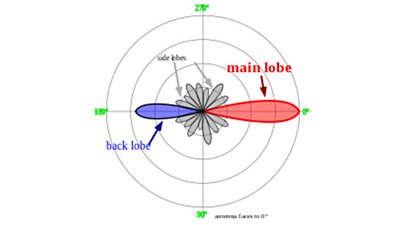
Flexible Waveguides
Equipment is normally used mounted on the roof of vehicles.
- Care must be taken to avoid effects of non ionising radiation produced by RF and microwave equipment on people: preventing operation in close proximity by careful positioning of vehicles, aiming of dishes and erecting barriers where necessary according to type of equipment.
- Failure of the flexible waveguide happens from time to time unpredictably.
- Equipment should be turned off before any inspection is attempted.
- It is not considered practicable to avoid all failures through inspection.
- The risk of exposure to non-ionising radiation from failure is considered small as the dish assembly is generally above head height, e.g. when mounted on top of the vehicle.
Radio Car transmitters
- When the transmitter is switched on the aerial emits a form of non-ionising radiation that can be dangerous. The RF field is less than conventional VHF transmitter, though can exceed safety guidelines within ½-a-metre of the aerial and is a special risk to eyes.
- NEVER touch the aerial when the transmitter is switched on. Do not touch or allow your head to get near the aerials while the transmitter is on.
- Never switch on the transmitter in a garage or petrol station. Radiation from the transmitter could cause a spark and an explosion.
- At the scene of a suspected or unexploded bomb you must cease transmitting if required to do so by the Police or Military Authorities. The transmitter should not be switched on within 1 kilometre of any suspect device because the RF could operate the bomb detonator.
- Do not transmit near a quarry or location where blasting is in progress.
- You must not transmit within 2 kilometres of any civil or military airport unless permission to do so has been obtained.
- Access to the aerial is via the step at the rear. You must never climb onto the roof nor allow a reporter or other person to do so.
- Similar precautions should be taken in respect of Inmarsat M4 located on the roof. The safe distance is 2m in front of direction of operation.
Generators
- Generator exhaust fumes are vented outside the vehicle in a position designed for best dispersal.
- Generators produce particulates and Carbon Monoxide which can be harmful. Fumes are vented outside vehicles with on board generators - though a concentration of vehicles parked together can lead to concentration of fumes.
- A CO detector must be provided to warn of build-up of fumes inside the working area.
- Keep doors closed where possible when working near generators or other engines that are running nearby.
- They should be afforded suitable space around them during operation and adequate ventilation.
- Warning signs may be needed.
- They should not be operated in confined spaces.
- Consider parking away from residential properties or businesses and/or reduce running times to essential.
- Generators operating under normal circumstances should not produce sufficient noise to breach limits.
- Place portable generators with due care to avoid causing nuisance to others nearby.
- Certain Generators may not be suitable for operation in rain or snow and should not get wet.
- Care must be taken that good ventilation is available if measures are taken to deal with weather.
Electrical Safety
- Only trained OB staff who are deemed to be 'competent persons' as outlined in BS7909 (Code of Practice for the Temporary Electrical Installations in the Entertainments Industry) are allowed to connect ���˿��� OB vehicles to a supply of power.
- Before connecting to a source of power an earth loop impedance test should be carried out by the OB competent person or site electrician. This is especially important when connecting to a TN-C-S supply (sometimes called a PME supply).
- Only power connections with a minimum rating of IP64 will be used to connect the vehicle to the source of power
- Power cable connections should not be left lying in gutters where water can form puddles etc.
- All portable equipment must carry an in date PAT label (Portable Appliance Test).
- Electrical systems on vehicles are provided with NICEIC certification. Copies of system diagrams and check certificate should be carried on the vehicle and should be made available when connecting to a 3rd party source of power. System must be re-checked following repairs or changes.
- An RCD must be used as close to source as possible whenever electrical equipment is being used outside but which is supplied with power from within a building or OB vehicle and is thus outside its equipotential zone.
- For OB units (which are classed as mobile rather than fixed installations), the RCDs on the supply side should be tested by operating the ‘test’ button at every new connection; and those on the vehicle outlets at least once a month and preferably at every re-location of the vehicle.
- News Technical vehicles capable of connection to shore power are fitted with an isolating transformer to guard against the unknown status of the earth in the supply.
- If the electrically competent person is required to leave the vehicle, (perhaps over a meal period), and production staff need to remain in the vehicle, then it is essential that one of the people remaining with the vehicle is given instruction on how to depower the vehicle in an emergency. This is a requirement of BS7909.
Display Screen Safety (particularly in smaller Newsgathering vehicles)
- Any DSE related working in a vehicle should ideally be for short durations only and regular breaks of 5-10 minutes should be taken every hour. Regular stretching, changing your posture and varying your activities can also assist. If working for longer periods with no access to local office, consider using a café or similar premises;
- Use the provided laptop tray on the back of the front seat and adjust accordingly to get a comfortable position for your head, shoulders and arms;
- Where possible keep your back straight, have the screen approximately arm’s length distance from you and top of screen level with your eyes to avoid minimum neck flexion/head movement;
- Use the provided back wedge or a cushion if this helps support your lower back and avoid sitting in a twisted position;
- Ensure once finished that all equipment is safely stored before travelling.
Connecting ���˿��� Installations to Other Broadcasters & Public Address Systems etc
When there is a requirement to exchange feeds with other broadcasters or public address system suppliers there are a number of precautions which must be taken to ensure the safety of both staff and ���˿��� equipment.
The fundamental requirement when connecting to equipment operated by other outside agencies is to ensure that safe electrical systems are preserved.
It is vital that there are no direct DC paths where audio and video interconnects take place, as this may compromise electrical safety. (It is possible for significant potential differences to occur when connecting two independently powered areas together. An audio “hum” induced on a circuit is usually a reasonable indication that a potential difference or earthing loop is occurring).
Appropriate isolation will be used as follows:
- Ideally all audio and video interconnections will be made using optical fibre multicore.
- For DC audio interconnection a passive transformer device or an active audio isolator will be inserted in the circuit to ensure that no direct DC Path exists between users.
- When connecting video systems a similar passive transformer device or active isolation will be employed. (A good indicator of a potential difference between the two connected areas will be “hum” bars moving up or down a monitor screen).
- Where the ���˿��� is required to provide audio or video feeds to a number of organisations an appropriate distribution amplifier will be used, to ensure that each outlet is isolated from the effects of a “misconnection” to any other outlet.
- No member of the ���˿��� Outside Broadcast will connect to another organisations output until the person in charge of the installation has given the appropriate permissions. Similarly, no member of any other organisation will connect to any ���˿��� plant until the senior member of the ���˿��� technical team (or his nominated deputy) has approved such a connection.
If there is any doubt about the integrity of any connection, further investigation and appropriate measurement must be undertaken to ensure that the safety of both staff and equipment is maintained.
Division Specific Issues
- Incorporating Radio OB MS;
- M005-09 Siting if ���˿��� Vehicles
- M007-09 Assessing & using a Public Power supply
- M008-09 Powering of OB vehicles
- M019-09 Connecting with Other Broadcasters
- M020-09 Rigging of Masts & Aerials
FAQs/Did You Know?
- It is illegal to cable across a public road without Local Authority permission.
- The safest place in the event of an electrical storm is inside the vehicle with doors and windows closed. The vehicle will act as a Faraday cage in these circumstances.
Useful documents
Vehicle topics
-
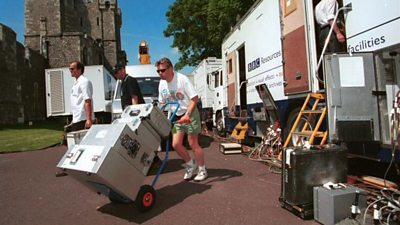
Broadcast Vehicles
A guide to satellite vehicles, radio cars and uplink vehicles -
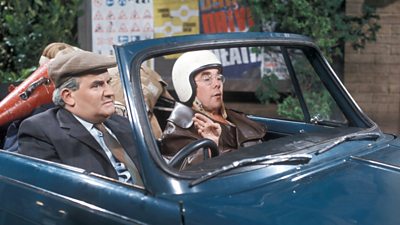
Driving & Cycling for Work
Our safety guideline to driving safely and legally on the public highway for the purposes of ���˿��� work. -
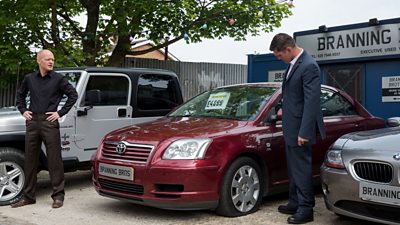
Safety Short: Vehicle checks
���˿��� Safety's Safety Short on Vehicle Safety Checks. -

Tail Lifts
���˿��� Standard and Guidance on the safe use of vehicle tail lifts -
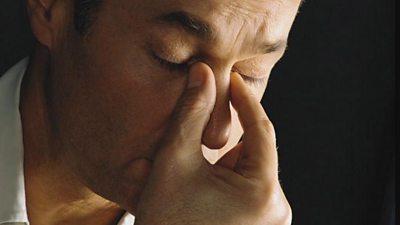
Tiredness and Fatigue
A guide to the scheduling and management of your team’s working hours. -

Vehicles: Recording in, from and around
A guide to recording a driver or passengers from within a moving vehicle. -
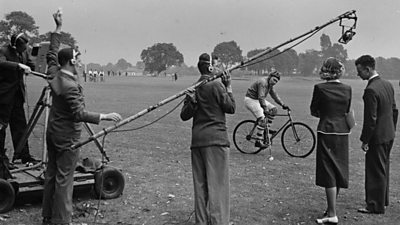
Vehicles Used in Sports Coverage
A guide to the safe use and provision of vehicles used in sports coverage, including quad bikes and golf buggies. -
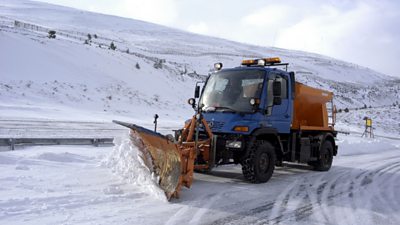
Winter conditions - driving and location safety
This safety guidance covers the additional risks to driving during harsh winter conditions in the UK.
Outside Broadcast topics
-

Broadcast Vehicles
A guide to broadcast vehicles including, satellite vehicles, radio cars and uplink vehicles etc. -
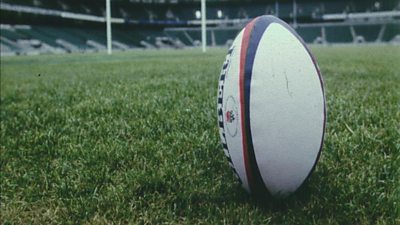
Broadcast: Presentation and Linking Positions
Presentation or linking from purpose-built studio facilities. -

Electrical Safety in Studios
A guide to using electrical equipment in studios. -

OB Venue Rigging
Rigging a TV or Radio OB venue can be a multi-hazard activity which should be carried out by competent personnel only. -

OB Riggers
Competence criteria for OB riggers. -

Sports Events: Recording or Filming
Guidance on filming on track/pit side. -
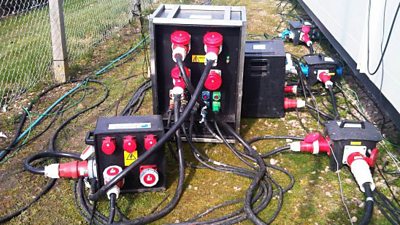
Temporary Electrical Systems and BS 7909
A guide to using electrical equipment on location. -

Weather
Guidance on working in different weather conditions. -

Working on Broadcast Gantries & Platforms
Working on media positions provided primarily within stadiums.
More from SSR
-
Your platform to record accidents, risk assessments, assurance monitoring and inspections
-
Safety Equipment Stores
Just one number to call: 020 3614 5155 -
���˿��� Safety Guidelines
An A-Z of ���˿���'s Health and Safety Guidelines -
Safety Advice Line: 0370 411 0464 Email: safety@bbc.co.uk
- A-Z of ���˿��� Safety Guidelines
- Accident Reporting and Investigation
- ���˿��� Health & Safety Policy
- Contractors (incl. vetted lists)
- Contributors
- Fire Safety
- Freelancers
- Independent Production Companies
- Risk Assessment
- Safety Alerts
- Safety Responsibilities
- Safety Training
- Sets & Premises Safety Guide
Events guidance - key links:
- Exhibitions
- General Guidance
- Indoor Location Recce Checklist
- Outdoor Location Recce Checklist
- Major Incidents & Emergency Planning
- Marketing and Promotional
- Noise Exposure
- Planning and Management
- Responsibilities
- Responsibilities Form
- Laser Lighting Effects
- Strobe Lighting
- Temporary Stages and Rostra
Health topics - key links:
- (���˿��� network only)
- Contributors Fitness to Participate
- Display Screen Equipment (DSE)
- (���˿��� network only)
- First Aid and Welfare on Location
- International Travel - Risks & Health
- Manual Handling
- Mental Health: ���˿���page
- (���˿��� network only)
- Personal Health and Wellbeing
- Pregnancy
- Psychological Trauma Support & Trauma Risk Management (TRiM)
- Tiredness and Fatigue
- Travel Health Contacts
���˿��� High Risk - key links:
- CBRN and Industrial Spills
- Covert Filming
- Crisis Management and Security Support
- Demonstrations, Protests and Crowds
- Disaster Coverage
- Door Stepping
- (���˿��� network only)
- (���˿��� network only)
- Public Order
- Safety Equipment Stores
���˿��� Journalism - key links:
���˿��� Productions - key links:
- Aerial Filming and Airfields
- Animals: Displaying and handling for performance
- Boats: Working on
- Children and Young People
- Driving
- Electrical Equipment and Systems
- First Aid and Welfare on Location
- Food Safety (Cooking and Catering)
- Remote Location Working
- Roads and Streets: Working by
- Security of Productions on Location
- Stunts
- Tiredness and Fatigue
- Unmanned Aerial Systems (UAS aka Drones)
- Vehicles: Recording in, from and around
- Working at Height: Mobile Elevating Work Platforms
- Working at Height: Tower Scaffolds
���˿��� Radio - key links:
- (���˿��� Network only)
���˿��� Security - key links:
���˿��� Sport - key links:
About this site
This site describes what the ���˿��� does in relation to managing its health, safety and security risks and is intended for those who work directly for the ���˿���.
It is not intended to provide instruction or guidance on how third parties should manage their risks. The ���˿��� cannot be held liable for how this information is interpreted or used by third parties, nor provide any assurance that adopting it would provide any measure of legal compliance. More information
Some links on this site are only accessible when connected to the ���˿��� network
